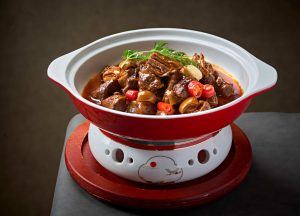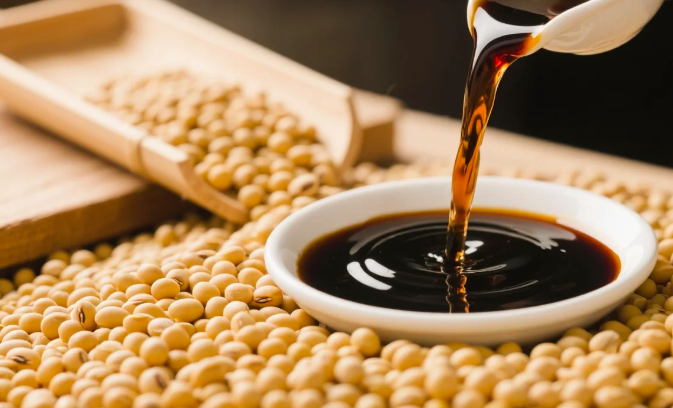目录
ToggleDark soy sauce is an essential component of many Asian dishes. It is known for its deeper color, richer flavor, and thicker consistency than standard soy sauce. Even though it’s widely used, especially in Chinese cooking, many people might not be aware of all of its special benefits and how it improves food. This article explores dark soy sauce’s unique qualities, applications, and distinctions from other varieties.
What is Dark Soy Sauce?
 It is a fermented condiment mostly made of soybeans, water, salt, and wheat. It is made similarly to light soy sauce, but the main distinction is the length of time it is brewed and the caramel or molasses added to give it its distinct black color and hint of sweetness. The prolonged fermenting procedure also results in its more powerful, rounded flavor profile and thicker consistency fermented condiment.
It is a fermented condiment mostly made of soybeans, water, salt, and wheat. It is made similarly to light soy sauce, but the main distinction is the length of time it is brewed and the caramel or molasses added to give it its distinct black color and hint of sweetness. The prolonged fermenting procedure also results in its more powerful, rounded flavor profile and thicker consistency fermented condiment.
The dark soy sauce has a richer, deeper umami flavor and is less salty than light soy sauce. This makes it ideal for enhancing recipes like stir-fries, stews, and braised meats that benefit from a richer sauce base by adding color, complexity, and depth.
Uses in Cooking
One of the main advantages of dark soy sauce is its versatility. It plays a dual role in the kitchen, serving as both a flavor enhancer and a coloring agent. Due to its deep color, it is often used to give dishes a more appealing, rich appearance. For instance, it is a common ingredient in marinades for meat or tofu, where it imparts both flavor and a glossy, dark finish when cooked.
In addition to its aesthetic value, the is often used in slow-cooked or braised dishes, where its thick consistency holds up well over longer cooking times. Its slightly sweet flavor, balanced by a mellow saltiness, pairs beautifully with ingredients like mushrooms, garlic, ginger, and five-spice powder. It’s an essential ingredient in Chinese dishes like Red-Cooked Pork, a braised dish that relies on this soy sauce for its caramelized, savory sauce.
Comparing Dark and Light Soy Sauce
While both dark and light soy sauces are used in Asian cooking, understanding the difference between the two is key to mastering the art of seasoning. Light soy sauce is more liquid and saltier; it’s frequently used as a dipping sauce or all-purpose condiment. Its primary function is to add saltiness without significantly changing the dish’s color. Contrarily, dark soy sauce is sweeter and thicker, which makes it a superior choice for enhancing color and flavor.
When a recipe calls for soy sauce, it’s important to note whether it specifies dark or light soy sauce, as using one in place of the other can significantly alter the taste and appearance of the dish.
Conclusion
Dark soy sauce is an indispensable ingredient in many Asian kitchens. Its deep color, rich umami flavor, and thick consistency make it a great addition to many different meals, especially ones that benefit from braising and slow cooking. It is essential for bringing out the depths of flavor in every dish, from an easy stir-fry to an exquisite slow-braised dish.
0








